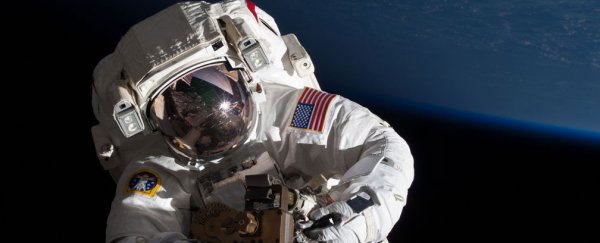If humankind is ever going to get off this rock we call Earth, we'll have to find a way of dealing with cosmic radiation – the high-energy particles speeding through open space that have been found to be harmful when we're not protected by our planet's atmosphere.
Fortunately, scientists at CERN have announced they are working on a solution to this very problem. In collaboration with the European Space Radiation Superconducting Shield (SR2S) project, CERN is developing a superconducting magnetic shield that can protect a spacecraft and its occupants from cosmic rays during deep-space missions.
The shield will repurpose one of the discoveries made by CERN physicists last year, when it achieved a record-breaking electrical current using magnesium diboride (MgB2) for its superconductor cables. The team working on the shield will use the same material for the magnet's superconductor coils in a new configuration, designed to generate a field that's strong enough to stop harmful space rays from penetrating spacecraft exteriors to harm astronauts and equipment.
"In the framework of the project, we will test, in the coming months, a racetrack coil wound with an MgB2 superconducting tape," said Bernardo Bordini, coordinator of CERN activity on the project, in a statement. "The prototype coil is designed to quantify the effectiveness of the superconducting magnetic shielding technology."
Previous announcements from SR2S have suggested that the issue of cosmic radiation can be solved within the next three years, with magnetic field technology enabling safe long-duration stays in space without harm from cosmic rays. The aim of the SR2S project is to create a magnetic field 3,000 times stronger than Earth's own magnetic field, with a 10-metre diameter protecting astronauts within or directly outside a spacecraft.
The technology is pretty much essential if we want astronauts to safely spend any significant amount of time in space. In addition to causing potential cognitive decline, it's believed that prolonged exposure to cosmic rays may increase the likelihood of astronauts developing various types of cancers.
"This situation is critical. According to our present knowledge only a very small fraction of NASA's active astronauts are suitable to stay on the ISS for a one-year mission regardless of the fact that the exposure to radiation is two times less than the exposure during deep space travel," said Roberto Battiston, project coordinator of SR2S, in a press release. "The next exploration challenges, deep space travel to Near Earth Asteroids and long-duration stay on Mars and on the Moon, require an effective way to actively shield astronauts."
